Project management partnership picked for California high-speed rail
Time:2024-10-22From:sinorock View:
The California High-Speed Rail (CHSR) project is one of the most ambitious infrastructure undertakings in the United States. Set to revolutionize transportation across the state, it promises to connect major cities through a sustainable, high-speed rail system that will reduce travel times, lower emissions, and boost economic development. Recently, the California High-Speed Rail Authority (CHSRA) appointed a project management partnership to oversee the delivery of the first segment of the rail system. The appointment of PGH Wong Engineering and Harris & Associates for the initial 30-mile section between Madera and Fresno is a significant milestone in the project's development.The California High-Speed Rail Project: Vision and Scope
The CHSR project aims to transform the way Californians travel. Once completed, the high-speed rail will connect major cities like San Francisco, Los Angeles, and San Diego, allowing passengers to travel between them at speeds exceeding 200 miles per hour. The project's goal is not only to reduce congestion on highways and at airports but also to provide an environmentally friendly alternative to traditional transportation methods. By running on renewable energy, the CHSR system is expected to significantly reduce greenhouse gas emissions, aligning with California's ambitious climate goals.
The current phase of the project focuses on the Central Valley, a region that will serve as a critical connector between the state's northern and southern metropolitan areas. The 30-mile section between Madera and Fresno is part of this initial phase, and its successful delivery will pave the way for the extension of the rail system across the state.
Project and Construction Management: PGH Wong and Harris & Associates
The selection of PGH Wong Engineering and Harris & Associates to manage the project and construction of the first segment is a strategic decision based on the companies' expertise and track records. Together, they bring decades of experience in managing large-scale infrastructure projects, particularly in transit systems, which makes them well-suited to oversee the CHSR initiative.

PGH Wong Engineering: Expertise in Transit Infrastructure
PGH Wong Engineering has a long history of working on complex transit projects. Their experience includes managing the Bay Area Rapid Transit (BART) Silicon Valley Berryessa Extension, the Central Phoenix/East Valley Light Rail Transit System, and the San Francisco International Airport AirTrain System. Each of these projects demonstrates the firm's ability to manage both the construction and operational challenges associated with large-scale transportation infrastructure.
PGH Wong's role in the CHSR project will likely focus on ensuring that the construction adheres to the highest standards of quality, safety, and efficiency. Their past work on design-build projects will be especially valuable, as the CHSR project will also rely on this integrated approach to accelerate construction and reduce costs.
Harris & Associates: A Commitment to Community and Sustainability
Harris & Associates is another key player in the project management team. Known for their focus on infrastructure that benefits communities, Harris & Associates has a strong commitment to sustainability and social responsibility. Their experience in managing public works and transit projects across California makes them an ideal partner for the CHSR initiative.
One of the standout aspects of Harris & Associates' involvement is their commitment to small business participation. As noted by Jeff Morales, the CHSRA's Chief Executive, the partnership has already achieved the Authority’s goal of 30% small business participation, with over half of those small businesses located in the Central Valley. This focus on local businesses not only fosters economic growth in the region but also ensures that the project has a positive, community-based impact.
Design-Build Approach: Streamlining Construction
The CHSR project employs a design-build approach, which integrates the design and construction phases of the project under one contract. This method allows for faster project delivery, as it reduces the time spent on design approvals and minimizes potential conflicts between designers and contractors. PGH Wong Engineering’s extensive experience with design-build projects will be instrumental in ensuring that the CHSR project adheres to its timeline and budget.
By reducing the number of intermediaries and streamlining communication between teams, design-build also helps manage costs more effectively. For a project of this scale, where delays and cost overruns can have significant financial and political repercussions, the design-build approach is an essential element in ensuring the CHSR’s success.
Economic and Environmental Impact
The appointment of PGH Wong Engineering and Harris & Associates as project managers not only boosts the project’s chances of success but also reinforces its economic and environmental goals. The CHSR is expected to generate thousands of jobs during its construction phase and provide long-term employment opportunities in operations and maintenance once the system is up and running. Additionally, the involvement of small businesses, particularly those in the Central Valley, will ensure that the project has a direct positive impact on local economies.
On the environmental front, the CHSR is a critical component of California’s plan to reduce carbon emissions. The state has long been a leader in environmental policy, and the high-speed rail system is designed to align with those goals. By running on renewable energy and offering an alternative to car and air travel, the CHSR will help reduce the state’s reliance on fossil fuels and contribute to a more sustainable future.
Small Business Participation: A Key to Success
One of the standout features of the CHSR project is its commitment to involving small businesses, particularly those located in the Central Valley. As Jeff Morales highlighted, 30% of the project management contract will be fulfilled by small businesses, with over 50% of those businesses based locally. This focus on small business participation is not only a strategic move to ensure that the project has strong local support but also a reflection of California's broader commitment to economic inclusivity.
Small businesses play a vital role in infrastructure projects, providing specialized services that larger firms might not offer. By involving these businesses in the CHSR project, the Authority is fostering innovation, creating local jobs, and supporting the Central Valley's economic development. This approach also ensures that the benefits of the high-speed rail system are distributed more equitably across the state, rather than being concentrated in urban centers.
The Broader Implications for U.S. Infrastructure
The CHSR project is part of a broader trend in the U.S. toward modernizing transportation infrastructure. As cities become more congested and environmental concerns grow, high-speed rail systems offer a viable alternative to traditional modes of transportation. While high-speed rail is common in countries like Japan, France, and China, the U.S. has been slower to adopt this technology. The success of the California High-Speed Rail project could serve as a model for other states, encouraging further investment in rail systems across the country.
In addition to reducing travel times and carbon emissions, high-speed rail projects have the potential to reshape urban development. By connecting cities more efficiently, these systems encourage the growth of regional economies and reduce the pressure on housing markets in major metropolitan areas. The CHSR project, in particular, is expected to have a transformative effect on the Central Valley, a region that has historically been less connected to California's economic hubs.
Conclusion: A Milestone for California's Future
The partnership between PGH Wong Engineering and Harris & Associates marks a major step forward for the California High-Speed Rail project. With their expertise in transit infrastructure and commitment to community engagement, these firms are well-positioned to oversee the successful delivery of the first section of the rail system. As the project moves forward, it will not only provide a faster, more sustainable way to travel but also serve as a catalyst for economic development in the Central Valley and beyond.
The California High-Speed Rail project is a symbol of what’s possible when innovation, sustainability, and inclusivity come together. While challenges remain, the appointment of a strong project management team is a promising sign that California is on track to deliver a world-class transportation system that will benefit generations to come.
latest news
-
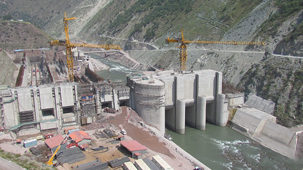
- What Are the Applications of SDA Bolts in Hydropower Stations?
- Time:2025-08-21From:This Site
- Learn how self-drilling anchor bolts enhance slope stability, tunnel support, and dam reinforcement in complex geological conditions at hydropower stations. Optimize hydropower projects with efficient, cost-effective, and eco-friendly solutions.
- View details
-
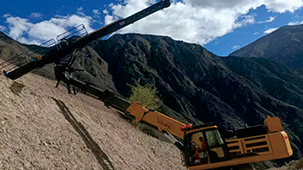
- Slope Stabilization with SDA Bolts: Benefits & Applications
- Time:2025-08-19From:This Site
- Discover how self-drilling anchor bolts (SDA bolts) provide superior slope stabilization for highways, railways, and tunnels. Learn their key benefits, installation process, and real-world applications in loose or collapsible soils.
- View details
-
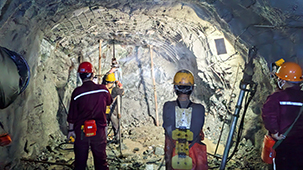
- How Self-Drilling Rock Bolts Enhance Tunnel Support in Fractured Rock?
- Time:2025-08-15From:This Site
- Discover how self-drilling rock bolts enhance tunnel support in fractured rock. Learn their benefits, installation steps, and real-world applications for safe, efficient tunneling.
- View details
-
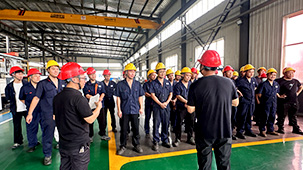
- Sinorock 2025 Quality Month | Strengthening Quality Foundations, Empowering Product Excellence
- Time:2025-08-13From:This Site
- Sinorock’s 2025 Quality Month, themed “Strengthening Quality Foundations, Empowering Product Excellence,” successfully concluded, reinforcing our commitment to superior product quality.
- View details
-
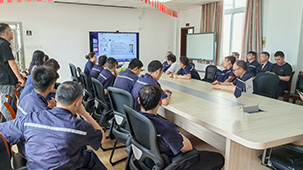
- Sinorock Safety Month 2025 | Everyone Speaks Safety, Everyone Can Respond
- Time:2025-07-03From:This Site
- Sinorock Safety Month 2025, centered on the theme "Everyone Speaks Safety, Everyone Can Respond - Spot Workplace Hazards," has wrapped up successfully!
- View details
-

- Quality Control: the Vital Factor of A SDA Bolt Factory
- Time:2025-01-09From:This Site
- Sinorock’s comprehensive quality control system, from supplier management to outgoing inspections, ensuring the highest standards for self-drilling anchor bolts in construction.
- View details
-

- Sinorock Invites You to Explore Proven Self-Drilling Anchor Bolt Solutions at bauma 2025
- Time:2025-03-07From:This Site
- From April 7–13, 2025, explore Sinorock’s Self-drilling anchor bolt solution at Booth C2.513/4 in Hall C2 of the Messe München Exhibition Center (Munich, Germany).
- View details
-
.jpg)
- SINOROCK to Attend EXPOMINA PERÚ 2024 in Lima, Peru
- Time:2024-08-10From:This Site
- Sinorock to Attend EXPOMINA PERÚ 2024 in Lima, Peru
- View details
-
.jpg)
- SINOROCK to Participate in MINING AND METALS CENTRAL ASIA 2024
- Time:2024-08-08From:This Site
- SINOROCK to Participate in MINING AND METALS CENTRAL ASIA 2024
- View details
 Download
Download 


